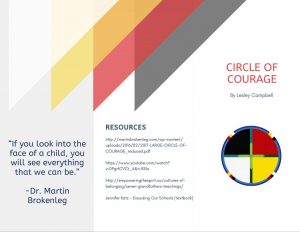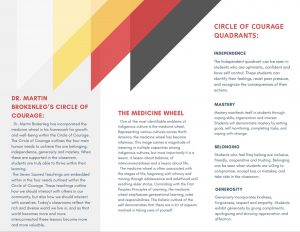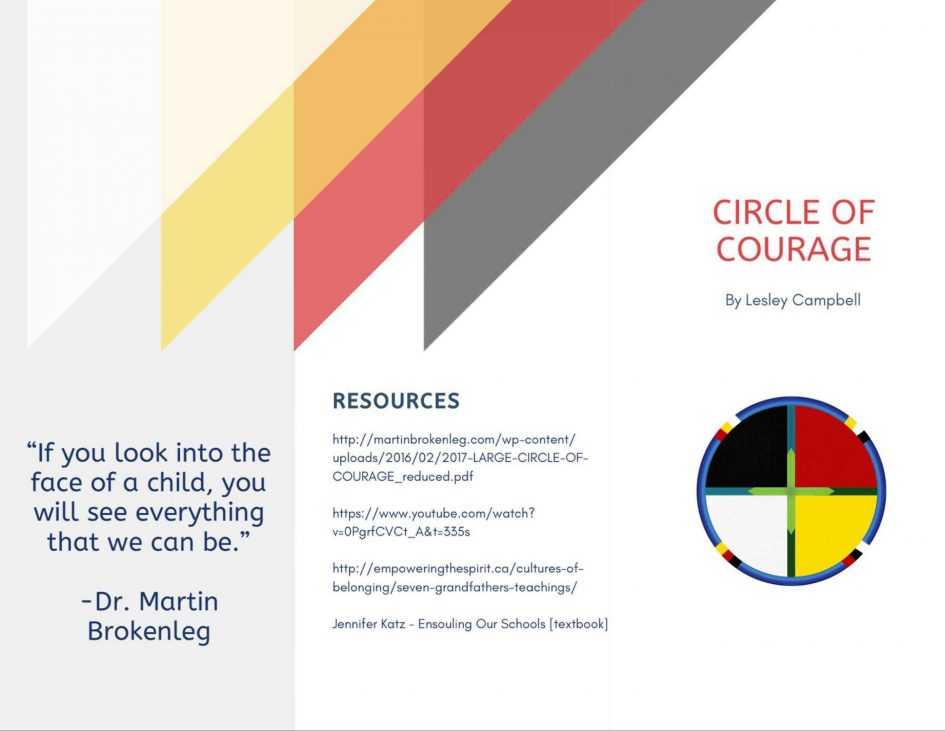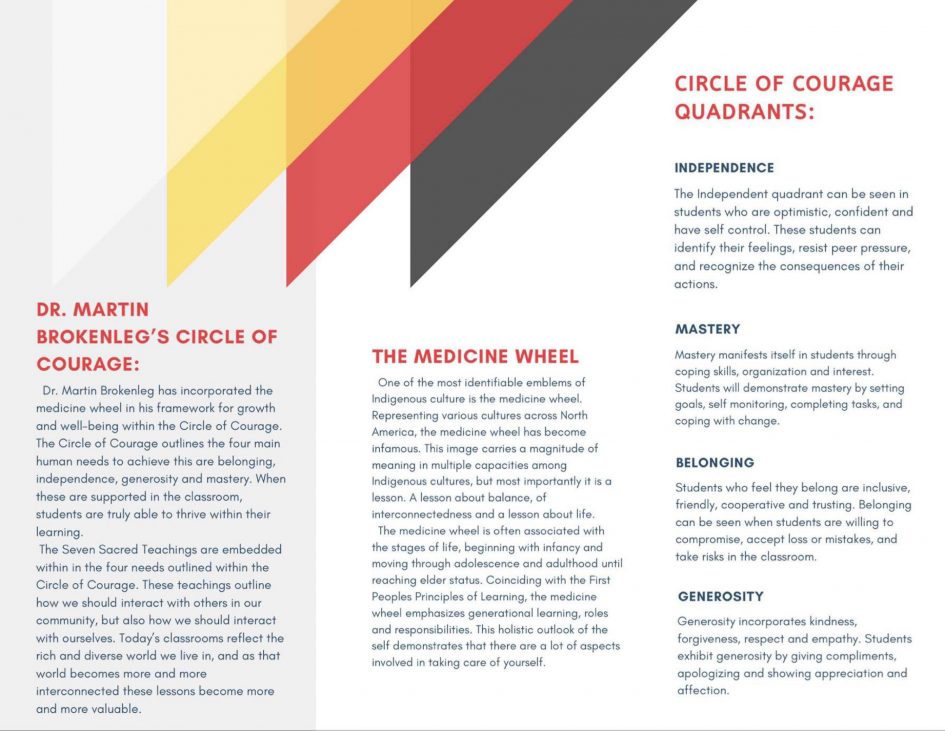

Circle of Courage
One of the most identifiable emblems of Indigenous culture is the medicine wheel. Representing various cultures across North America, the medicine wheel has become infamous. This image carries a magnitude of meaning in multiple capacities among Indigenous cultures, but most importantly it is a lesson. A lesson about balance, of interconnectedness and a lesson about life.
The medicine wheel is often associated with the stages of life, beginning with infancy and moving through adolescence and adulthood until reaching elder status. Coinciding with the First Peoples Principles of Learning, the medicine wheel emphasizes generational learning, roles and responsibilities. This holistic outlook of the self demonstrates that there are a lot of aspects involved in taking care of yourself.
Dr. Martin Brokenleg has incorporated the medicine wheel in his framework for growth and well-being within the Circle of Courage. The Circle of Courage outlines the four main human needs to achieve this are belonging, independence, generosity and mastery. When these are supported in the classroom, students are truly able to thrive within their learning.
The Independent quadrant can be seen in students who are optimistic, confident and have self control. These students can identify their feelings, resist peer pressure, and recognize the consequences of their actions. Students who don’t feel independent can feel misled, unassured and futile. We can support this in our classrooms by encouraging students’ talents and skills, demonstrating optimism and having open conversations about feelings, actions and consequences.
Mastery manifests itself in students through coping skills, organization and interest. Students will demonstrate mastery by setting goals, self monitoring, completing tasks, and coping with change. When students don’t feel that they have achieved mastery they feel defeated and confused, which develops into incompetence and disinterest. In the classroom, mastery can be supported in activities that involve short-term goal setting, encourage self-regulation and reflect student interest.
Students who feel they belong are inclusive, friendly, cooperative and trusting. Belonging can be seen when students are willing to compromise, accept loss or mistakes, and take risks in the classroom. Students show signs that they feel unbelonging through exclusion, distrust, detachment and rejection. Belonging can easily be incorporated into the classroom through friendly and cooperative interactions. Teachers play a large role in fostering belonging in a classroom and can lead heavily by example.
Generosity incorporates kindness, forgiveness, respect and empathy. Students exhibit generosity by giving compliments, apologizing and showing appreciation and affection. Students are reassured they are good people when they are actively generous. When this type of engagement isn’t happening, students may be disrespectful or feel empty. Generosity is another aspect that is led by example but can also be easily implemented into the classroom environment. Being open about classroom expectations towards respect and kindness is huge. Above that empathy and kindness can be encouraged through “compliment projects” and other similar activities.
The Seven Sacred Teachings; wisdom, love, respect, bravery, humility and truth are all incorporated in the four needs outlined within the Circle of Courage. These teachings outline how we should interact with others in our community, but also how we should interact with ourselves. Today’s classrooms reflect the rich and diverse world we live in, and as that world becomes more and more interconnected these lessons become more and more valuable.
One of the biggest goals for any educator is to have independent students who are mastering the material and thriving within their learning. Along with that, we all hope to foster a sense of belonging and community within our classroom. However, we tend to overlook how these elements are involved in redirecting misbehaviours, allowing for choice within presentation of course work, classroom environment, learning experiences, and developing self-identity.
As a teacher, you set the tone of the classroom. That tone gets reinforced by your behaviour, words, actions and reactions. Students look to you to learn from and too often we forget that we are teaching them more than the curriculum. By implementing the Circle of Courage into our teaching philosophies and leading by example we are teaching holistically to our student’s mind, body, heart and spirit. We are teaching to their being.
It’s been said a lot in class that “what is good for one is likely good for others” and I feel that that really applies to the Circle of Courage. Having Indigenous roots and focus does not mean that implementing it in the classroom will only be beneficial for Indigenous students. Going beyond benefiting students, the Circle of Courage can have positive effects in the classroom and school community.


Leave a Reply